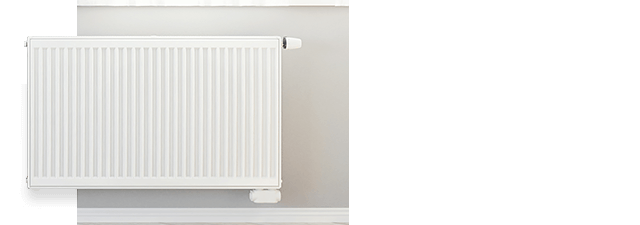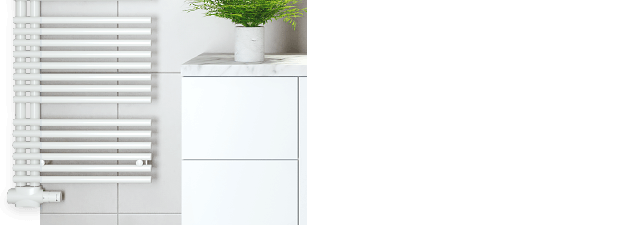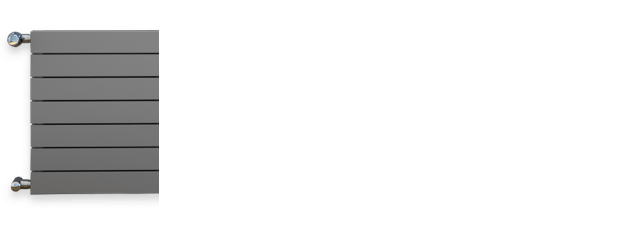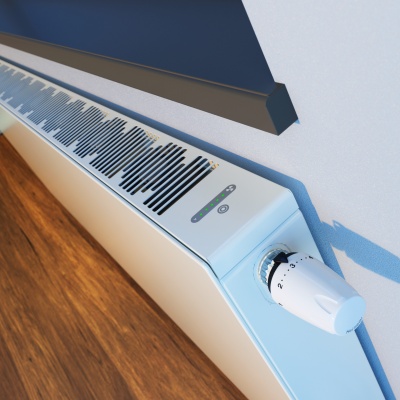How to Choose the Right Radiator
17. 4. 2025
How to Choose the Right Radiator?
Selecting a suitable radiator is a key step when installing or renovating the heating system in your home. A correctly chosen heating unit ensures optimal thermal comfort and can even become a decorative element in your interior.
What to Focus On When Choosing a Radiator
1. Correct Radiator Size
- Room heat loss – A critical factor in determining how large a radiator you need.
- Room size – Larger spaces naturally require more powerful or multiple radiators.
- Room orientation and number of windows – North-facing rooms and rooms with more windows need higher heating output.
- Thermal insulation of the building – Strongly affects the answer to the question of how large a radiator is needed.
2. Radiator Type by Room Use and Function
- Panel radiators – A universal solution for most rooms.
- Towel rail radiators – Combine functionality and aesthetics. Ideal for drying towels and heating bathrooms.
- Floor convectors – Suitable for rooms with large windows or low windowsills.
- Design radiators – Aesthetic solutions for more demanding interiors.
- Electric radiators – A great alternative where connection to central heating is not available.
- Dual-mode radiators – Offer flexible heating options.
3. Consider Technical Parameters and Practical Installation Tips
- Heating method – Hydronic / electric / combined
- Compatibility with heat source – Boiler, heat pump, etc.
- Appropriate dimensions – Must match the available space.
How to Calculate the Required Radiator Output?
When asking "how large should the radiator be?", the key is to know the required thermal output. For an approximate calculation, use the following values:
- New builds with good insulation: 60–70 W/m²
- Standard insulated houses: 90–100 W/m²
- Older houses with poor insulation: 120–150 W/m²
For more accurate calculation, take into account:
- Heat loss through walls, windows, and ceilings
- Heat loss through ventilation
- Heat gains from sunlight or electrical appliances
For precise results, we recommend consulting a heating expert or using specialized thermal analysis software.
What Affects the Required Radiator Output?
While the above values offer a starting point, an accurate calculation also considers:
- Heat loss through transmission – Heat escapes through walls, windows, doors, floors, or ceilings depending on the building materials and insulation quality.
- Ventilation heat loss – Frequent airing or leaky windows lead to greater heat loss. Use heat recovery units with a heat exchanger to minimize losses.
Other factors include room orientation (south-facing rooms gain more solar heat), ceiling height, number of windows, corner positioning, or attic location.
How to Choose the Right Radiator?
- Determine Room Heat Loss: Start by understanding how much heat the room actually needs. You can use an approximate calculation based on square meters (see above), but ideally, have a professional heat loss analysis carried out. This will take into account factors such as window surface area, insulation level, room orientation, and ceiling height.
- Choose the Radiator Type According to Room Function and Your Design Preferences: Panel radiators with a clean, simple look are ideal for living rooms. Towel rail radiators (ladder-style) are perfect for bathrooms – both decorative and functional. Space-saving vertical models are a great fit for narrow hallways. Designer radiators today can become a central interior feature. Always consider the function – for instance, in a bathroom, opt for a model that allows towels to be hung and dried
- Consider the Radiator Material Based on Its Properties and Lifespan: The material affects heating performance, responsiveness, and longevity.
- Steel radiators – The most common and affordable option, heats up quickly.
- Aluminium radiators – Lightweight, modern look, fast reaction to temperature changes.
- Cast iron radiators – Extremely durable and hold heat for a long time. However, they are heavy, more expensive, and have slower thermal response, making temperature control less precise.
Each material has its advantages and disadvantages, so choose based on your building’s characteristics and personal preferences.
- Choose Dimensions Based on Available Space and Required Output: A key part of answering the question: How big should the radiator be? The radiator’s size must correspond not only to thermal output, but also to installation space – under a window, on a wall, or freestanding. Generally, a larger surface area means higher output, but there are compact high-efficiency models available.
- Select the Right Connection Method: Radiators vary in how they connect to your heating system. The most common connection options are:
- Bottom connection – Popular with modern radiators and hidden piping.
- Side connection – Great for renovations using existing side-mounted pipework.
- Middle (central) connection – A symmetrical, clean look ideal for designer models.
Connection type affects both appearance and installation costs, so consider your current piping layout and the room’s visual design.
Key Criteria When Buying a Radiator
- Price vs. quality – Cheaper options can lead to higher operational costs over time.
- Thermal output – Must match the room’s heat loss – a critical factor when choosing a radiator.
- Material and workmanship – Directly affects durability and ease of maintenance.
- Warranty and service availability – Essential for reliable long-term use.
- Control options – Thermostatic valves, programmable heads, or electronic regulation.
- Energy efficiency – Modern radiators offer more effective heat transfer.
- Aesthetic considerations – The radiator should harmonize with your interior and architectural style.
Practical Installation Tips
- Install radiators preferably under windows – This helps eliminate cold drafts.
- Maintain recommended clearance from walls, floors, and furniture – To ensure optimal airflow.
- Consult a specialist about pipe sizing – It affects the performance of the entire heating system.
TIP: For Renovations
When renovating, we recommend the RADIK KLASIK-R with 500 mm pipe spacing, which offers:
- Easy replacement of old cast-iron radiators
- Utilization of existing pipe connections
- Minimal construction work
TIP: For Humid Rooms
Galvanized RADIK VK-Z radiators are designed for spaces with increased humidity or slightly aggressive atmospheres – ideal for bathrooms, laundries, or utility areas.
Choosing the right radiator is not just about output, but also about practicality and design. When deciding, consider both technical specifications and the functional and visual demands of the specific room.
Want to learn more?
Visit our Modern Heating page for a full overview of heating options and plenty of inspiration for your home.





